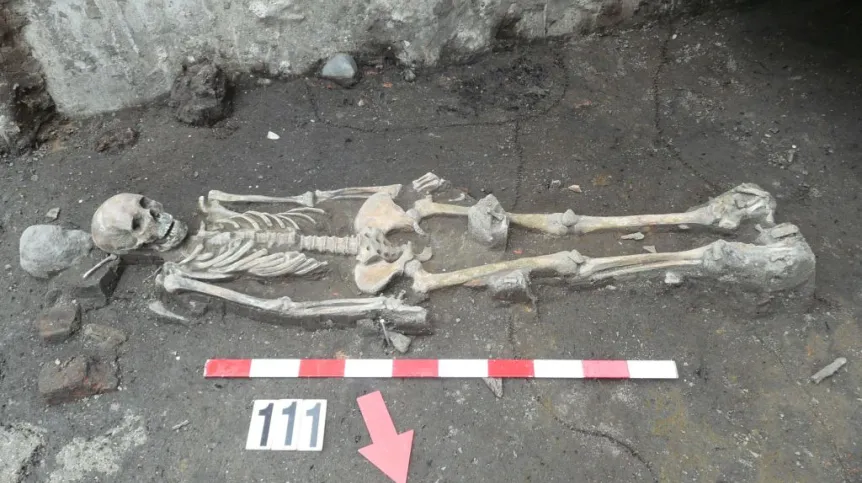
Archaeologists discovered the remains of victims of the plague epidemic of the early 18th century during the excavations in Śródka, Poznań. Until now, scientists were only finding burials from the time of the first Piast dynasty in this area.
The discovery was made near Rondo Śródka. For the past 20 years, archaeologists have been investigating a very extensive early-medieval necropolis from the end of the 10th - beginning of the 13th century. Its individual fragments are being discovered during the excavations conducted in connection with the construction planned in the area.
The cemetery, in which the dead were buried, was located outside the Poznań castle town - on the eastern bank of the river Cybina, which surrounded Ostrów Tumski along with the Warta.
"The medieval graves are dug deep beneath the surface of the earth, so it was a surprise to discover three skeletons above them" - told PAP research leader Paweł Pawlak. Based on the location of the graves and their contents, including a silver coin, researchers estimate that the dead were buried in the beginning of the 18th century.
The last known burials in this place dated back 800 years. Later, the area of Śródka was gradually built up.
"We suspect that they were victims of the epidemic - the plague that raged in Poznań in 1709. The cemeteries that were at the temples, like the one at the church of St. Margaret, were closed during the outbreak. The residents of Poznań had to deal with the burials of their loved ones themselves" - said Pawlak. Scientists estimate that as many as 65 percent of the population of Poznań, about 8-9 thousand people, died of the disease.
The three graves were dug right next to a house, probably in the garden. Two bodies were placed in graves hastily, probably only wrapped in shrouds. Only one body was placed in a pine coffin. The researchers determined that it was an elderly woman.
During this year\'s work archaeologists have also continued research on the early medieval cemetery - so far, after two decades of excavations, they have counted about 500 graves dating back 1000 years. This year, an unusual grave caught their attention. As a rule, during the Middle Ages, the dead were laid in a grave on their backs, with their arms along their bodies and their heads pointing toward the west or east. In this case the deceased was pushed into a hastily dug pit with bent legs and head in a vertical position.
"It also turned out that the upper part of the body of the deceased was cut off from his pelvis, and in the jaw we found a large fragment of a ceramic vessel" - said the archaeologist. In his opinion it is likely that the deceased was a criminal sentenced to be quartered.
"But it is puzzling that the deceased was buried in a consecrated cemetery - usually there was no place for criminals in such cemeteries during the Middle Ages" - he added. It can not be ruled out that the family was responsible for the burial of their loved one and buried him in the resting place of the whole community.
PAP - Science and Scholarship in Poland, Szymon Zdziebłowski
szz/ agt/ kap/
tr. RL













